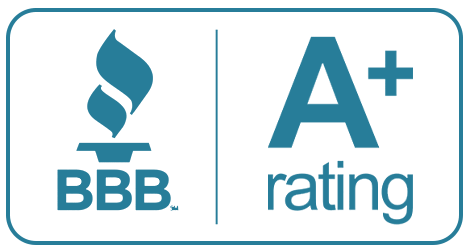Maintaining an indoor humidity level between 30% and 50% is ideal for your Buda, TX home. Not only will optimal relative humidity protect flooring, wallpaper, and belongings, but it also ensures comfort during the fall months and beyond. Our team here at Mend Services can help you find the perfect balance of humidity for fall comfort.
What Is Relative Humidity?
Relative humidity refers to the amount of moisture in the air compared to the maximum humidity the air can hold at a certain temperature. You can monitor the relative humidity in your home using a simple hygrometer. If you have a smart thermostat, you may have a hygrometer built into this device. You can monitor relative humidity remotely with a smart thermostat and make necessary changes to humidity-controlling equipment, ventilation, and more.
The Impact of Humidity
When the air inside your home is dry, it can irritate your sinuses and airways. You may also experience dry skin and hair. If humidity rises too high, it can promote the growth of mold, increase allergy symptoms, and make your indoor air smell musty. You may also notice a change in sleep patterns when indoor humidity isn’t balanced. Humid air can feel warmer than it is, and dry air can feel cooler. You may overuse your HVAC system to try to compensate. This can be expensive and lead to equipment strain over time.
When we transition from summer into fall, there is a large shift in temperature and moisture levels. Humidity during the day can be low, while cooler nights can be humid. Spending more time indoors during the fall months can increase humidity. Showering, cleaning, and cooking all add moisture to the air.
The Use of Humidifiers
When the air inside your home is dry, you may use a portable humidifier to add moisture. However, these units often don’t address much square footage at once. Also, you have to keep up with replacing water in the unit and moving it from one room to another. Instead, you have the option to install a whole-home humidifier onto your HVAC system. When fall weather makes the air feel dry, you can run your humidifier when your HVAC system is running. This adds moisture to all the air that’s circulating through your home.
The Use of Dehumidifiers
A portable dehumidifier can be very inconvenient. They require frequent emptying of their collection tank. Otherwise, the unit won’t work. They also address a small amount of square footage at one time. Instead, we recommend having our team install a whole-home dehumidifier onto your HVAC system. As air passes through your system, moisture is removed. It will pass through a drain line, eliminating the need to empty a collection tank periodically.
Maintaining Your Equipment
Whether you have a whole-home dehumidifier, a whole-home humidifier, or both, it’s important that you keep up with routine maintenance. Making sure the drain line is clear of sediment or mineral deposits can prevent leaks and pooling water. We can inspect the interior of your equipment for any signs of damage or debris accumulation. Routinely clean or change the filters in your units. This promotes normal airflow and prevents strain. This is also important for maintaining healthy indoor air quality. Skipping routine maintenance can lead to microbial growth on the interior of your equipment, which can be dangerous to your health.
Common Humidity Mistakes
Many homeowners make mistakes when it comes to controlling humidity in their homes. For example, you shouldn’t attempt to add moisture or remove it without first checking the humidity throughout your entire home. Levels of relative humidity can vary from one room to another, especially from one day to the next. It’s ideal to collect data and monitor your moisture levels in real time. Seasonal changes can have a profound impact on the level of humidity in your home, especially when transitioning from summer to fall.
It may be necessary to add moisture to your indoor air if it is dry and causing problems. However, you don’t want to add too much moisture to the air. This can promote the growth of mold, lead to foul odors, and increase the presence of allergens in your living environment. You should never see condensation on windows or mirrors, as this points to high humidity. When using a whole-home humidifier or standalone unit, make sure you’re monitoring relative humidity levels. You can turn off your equipment when you reach approximately 50%.
Are These Units Expensive to Run?
Modern humidifiers and dehumidifiers are designed to run using minimal power. Typically, whole-home dehumidifiers will use more energy than whole-home humidifiers. However, if you’re running these units intermittently and investing in energy-efficient models, the cost should be minimal.
Does the Quality of Water Matter?
When you’re using a whole-home humidifier to add moisture to your air, the quality of water matters. High levels of chemicals and contaminants in your water source can negatively impact your indoor air quality. You may experience irritation of your eyes and sinuses. Some people may experience coughing or respiratory issues. It’s beneficial to have a filtration system installed in your home. A water softener can address hard water. Multi-stage filtration can remove things like bacteria, chemicals, and heavy metals.
If you have hard water in your home, this can leave mineral deposits on the interior components of your equipment. This can lead to frequent repairs and shorten the life expectancy of your units.
What If I Have a Zoned System?
It’s possible to integrate whole-home humidifiers and dehumidifiers into a zoned HVAC system. These units install onto your ductwork at the location of the main supply and return trunk. When you have a zoned system, dampers will direct airflow. If you’re minimizing airflow to certain areas of your home, this will reduce the amount of dehumidification or humidification they receive. Make sure you’re monitoring indoor humidity throughout your home to ensure moisture doesn’t get too high or too low within your zoned system.
The installation of these units may be more expensive with a zoned setup due to more extensive wiring and monitoring. However, you still reap the benefits of a whole-home model versus portable devices that provide minimal support.
Choosing a Dehumidifier or Humidifier
We can help you select a whole-home dehumidifier or whole-home humidifier for your residence. It’s ideal to select an ENERGY STAR-rated appliance. This will save you money by reducing energy consumption. We will also consider the size of your home and the average relative humidity readings you experience. It’s important that you don’t have an oversized unit that will waste energy. Something that is undersized will be forced to work harder to control humidity, leading to equipment problems and system inefficiencies.
Mend Services is available to install humidity-controlling dehumidifiers and humidifiers onto your HVAC system. We believe in a whole-home approach that boosts comfort, efficiency, and protects your health. We encourage you to reach out to us here at Mend Services in Buda if you would like to schedule an appointment to check your home’s air quality.






